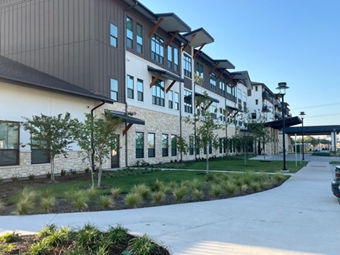
Controlling Cracks in Cement Stucco & Plaster

Cracking in Stucco is an issue as old as the use of Portland Cement Plaster (Stucco). Engineers recognize the inherent susceptibility of cracking in Stucco. Stucco is a brittle material, great in compression, weak in tension or flexure. Therefore, it is critical when the Project calls for Stucco that Galindo & Boyd has a required company program to educate and aid the designer and ensure quality control within its own organization. We cannot guarantee a crack-free Stucco job, but we can use our talents to minimize common errors in designing and applying Stucco.

G&B 6 POINT STUCCO PROGRAM
Educating the Design Team: Design professionals play a crucial role in managing client expectations. By understanding the limitations of stucco and focusing on minimizing, rather than eliminating, the risk of cracks, we can ensure a more realistic and successful project outcome. Education includes proper design parameters are considered. Type of end use of building to receive a Stucco clad exterior is also a consideration.
Review of the Contract Documents: A qualified G&B team of experienced Stucco systems professionals will review the specified systems and details using our vast knowledge of what works and what does not work when it comes to Stucco performance. This review includes control joint layout, expansion joint needs, and trim selections to assure your stucco system is installed successfully. General Contractor and Design Team will be provided our recommendations for consideration early in the Project.
Choice of Materials: Selection of quality, compatible materials to be used in all phases of a Stucco system are critical to the long-term performance. The use of an engineered factory blended cement plaster mix is a key factor in getting consistency throughout the base coat application.
Curing: It is the belief of the G&B team that proper wet curing as outlined in the International Building Code (48-hours for each of the cement plaster base coats - scratch and brown) is the single most important step in reducing

System Upgrade: G&B has used Krak-shield as a tool in making stucco projects more crack resistant. Krak-shield is an industry term defining the upgrade to the typical Stucco system in the form of a reinforced base coat applied over the cement plaster base coats prior to the application of the finish coat. G&B’s goal is to have Krak-shield on every stucco application, it does not always work out that way, but it also helps with communicating the potential issues up front, offering a simple solution to everyone’s concern (regarding potential cracking) and if not accepted, a much manageable conversation when the hair line cracks do surface and the project team did not accept the Krak-shield option.
Quality Control: G&B employees from, Owners, Project Managers, Superintendents and Plasterers are skilled professionals and trained in making sure Stucco systems are installed to the best of their ability. QA/QC Checklist are specifically developed for each project, matching the approved product data submittals and the detailed installation instructions for each item installed. Inclusive of fastening patterns, curing times, tolerances, etc.

- Regardless of your personal opinions or stands on whether or not to cut the lath behind a control joint; control joints always go on top of the lath and always get wire tied in place (not fastened into the studs nor pointed into the sheathing). You’ll be surprised how much better they work, when done correctly.
- A few mesh & base “butterflies” at all the right places will save you a lot of headaches in the long run. Even if they are installed at your cost.
- Acrylics are your friends, treat them nicely. While some of the purists can pull off great work with cement finishes and no cracking, the Texas market is mostly acrylic base coat over the brown, acrylic primer and acrylic finish. If you are already skimming the brown with acrylic base coat, see item “b” above, it is really a “no brainer”.
- Reglets are not control joints and control joints are not reveals. Focus on the performance of the wall and avoid sacrificing that, over aesthetics. This too will keep you out of trouble.

Cracking
Cracks observed in traditional Stucco systems after the initial set and curing and application of the finish coat are generally of a hairline nature and are termed “stress cracks”. A stress crack is due to the transfer of outside forces into the stucco assembly. Stress greater than the resistance of the stucco results in a crack. Hairline cracks are generally considered to be cosmetic and not a source of water intrusion.
This is where the Krak-shield application comes into play, while not impossible to get cracking in an installation with Krak-shield applied, it is a rarity.
It is not practical to expect a manufacturer or a contractor to warrant stucco applications against cracking. Stucco warranties against cracking do not exist. As we have noted, factors that may affect cracking are outside the control of the manufacturer and/or contractor.
In conclusion, while it's important to follow best practices in stucco installation, it's equally vital to recognize that stucco cracking is not entirely preventable. By educating the design team and clients about the nature of stucco and the steps taken to minimize cracks, we can set realistic expectations and ensure a successful stucco project.
Additional Info
Related Links : https://galindoboyd.com/
Source : By: Mike Boyd-Owner at Boyd Consulting Group and Manuel Galindo- President at Galindo & Boyd Wall Systems, LLC

